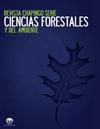Propagation of Arctostaphylos pungens Kunt from temperate forests of north-central Mexico
IF 0.6
4区 农林科学
Q3 Agricultural and Biological Sciences
Revista Chapingo Serie Ciencias Forestales Y Del Ambiente
Pub Date : 2022-04-30
DOI:10.5154/r.rchscfa.2021.03.013
引用次数: 0
Abstract
Introduction:Arctostaphylos pungens Kunt is a species with significant characteristics for restoration; however, there are few studies on its propagation. Objective: To evaluate the effect of pre-germinative treatments and the use of vegetative propagation methods in A. pungens. Materials and methods: Eight pre-germinative treatments were evaluated, consisting of scarification with H2SO4 (98 %) for 5 and 6 h, gibberellic acid immersion (1 000 ppm), cold stratification (4 °C for 30, 60 and 90 days) and heat shock (100 °C for 5 min), as well as combinations of these. Vegetative propagation was analyzed by cuttings and air layering. Results and discussion: The highest germination (73.33 ± 15.63 %) was for immersion in H2SO4 for 5 to 6 h; heat shock and cold stratification treatments showed low or no germination. Root formation was not achieved in cuttings but was achieved in 37.50 ± 25 % of 20-week air layering. Conclusion: The best treatments consisted of immersion in H2SO4. It is recommended to continue experimenting with vegetative propagation by leaving air layering for more than the 20 weeks used in this study to achieve complete root development.墨西哥中北部温带森林中刺竹葡萄的繁殖
导论:刺角葡萄球菌(Arctostaphylos pungens Kunt)是一种具有显著恢复特性的植物;然而,对其繁殖的研究却很少。目的:评价刺槐芽前处理和无性繁殖方法的应用效果。材料和方法:对8种发芽前处理进行了评估,包括H2SO4(98%)切割5和6小时,赤霉素浸泡(1 000 ppm),冷分层(4°C 30、60和90天)和热休克(100°C 5分钟),以及这些处理的组合。采用扦插法和空气分层法对无性繁殖进行了分析。结果与讨论:在H2SO4中浸泡5 ~ 6 h萌发率最高,为73.33±15.63%;热休克和冷分层处理的种子萌发率低或不萌发。扦插不能成根,但在20周的空气分层中有37.50±25%成根。结论:以H2SO4浸泡为最佳处理方法。建议继续进行无性繁殖试验,在本研究中留置空气分层20周以上,以达到完全的根系发育。
本文章由计算机程序翻译,如有差异,请以英文原文为准。
求助全文
约1分钟内获得全文
求助全文
来源期刊
CiteScore
1.20
自引率
16.70%
发文量
0
审稿时长
>12 weeks
期刊介绍:
The Revista Chapingo Serie Ciencias Forestales y del Ambiente (RCHSCFA) is a scientific journal that aims to raise awareness of high-quality research products related to forest, arid, temperate and tropical environments in the world. Since its foundation in 1994, the RCHSCFA has served as a space for scientific dissemination and discussion at a national and international level among academics, researchers, undergraduate and graduate students, forest managers and public/private entities that are interested in the forest environment.
All content published in the journal first goes through a strict triple-blind review process and is published in the following formats: Scientific Articles, Review Articles, Methodologies, Technical or Technological Notes.

 求助内容:
求助内容: 应助结果提醒方式:
应助结果提醒方式:


